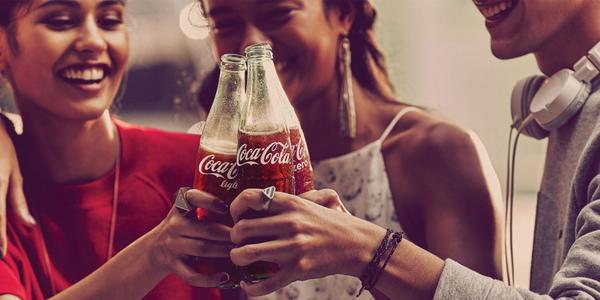Name
Instructor
Course
Date
Communication: Emotional Appeal
Emotional Appeal代写 Coca Cola Advert Emotional Appeal:Emotional appeal is a way of swaying the audience in ways to like a product or a speaker argument.
Coca Cola Advert Emotional Appeal Emotional Appeal代写
Link: https://www.coca-cola.co.uk/stories/history/advertising/share-a-coke
Emotional appeal is a way of swaying the audience in ways to like a product or a speaker argument. It utilizes emotions as the basis of an argument’s position without apparent facts that are logically identifiable with the appeal in support of an idea or something. It uses persuasive language as the foundation of an appeal to the emotion-based argument instead of facts. There is a wide range of applications of emotional appeals. The most prominent application is advertising.
In this regard, Coca Cola adverts use emotional branding as the basis of their adverts with the most prominent one being the “Share A Coke – Share a feeling” and ‘’Hug me’’ campaign” as displayed in figure 1 below. This paper will analyze the emotional appeal in Coca Cola branding and adverts that aimed to increase the brand identity with various age groups and geographical areas.

Figure 1: Coca Cola Name Branding. Share a Coke Campaign. (Source: Hepburn) Emotional Appeal代写
It was during the summer season in 2013 and 2014 that the Coca Cola company conducted the Sharing a Coke-Share a Feeling and Hug Me campaign. It began by using more than 150 of Britain’s most famous names (Hepburn, par. 1). Some of the famous names were “Aimee,” Bobby,” and “Zack,” among others. The names were printed on its products’ labels. The labelling also varied to include other emotional names such as “happy,” “love,” “wink,” “kiss” among others.
Also, share a Coke 2014 campaign involved personalized bottles, personalized glass bottles, virtual name bottles shared across Europe, and experimental stops in the Share a Coke tour. Additionally, the campaign adverts included a group of people sharing Coke with each of them holding a can bearing his/her name. The branding intended to put emotions on cans and bottles so people can share their feelings with friends. Another creative feature was squeezing the side of the soda dispenser to make a free Coke come out from it in Hug Me campaign as shown in figure 2. The move sparked a sharing frenzy across nations and groups and became the most successful branding campaign.

Figure 2: Hug Me Campaign (Source: Kosner) Emotional Appeal代写
The emotional branding by Coca Cola aimed at appealing for happiness. The use of customized names encouraged sharing of coke with friends that brought about joy. Customers identified with what represented their feelings at the moment of purchase. Names such as happiness, love, and kiss, were used as symbols of feeling good. The adverts showing people cheering and holding bottles and cans bearing their names also signify happiness. Personalization of bottles and cans coupled with Hug Me Coke dispenser too brought the aspect of love and hence embracing the need to be happy. Consumers felt identified with Coca Cola as the brand of choice and elicited happiness through customized branding and adverts.
The emotional branding by Coca Cola was successful since it managed to persuade its target customers who responded by buying more of the products. Furthermore, I being part of the target group was persuaded to buy Cokes to share with friends. More than 250 million named bottles and cans were sold to less than 23 million people (Hüseyinoğlu, par. 22). The campaign was able to reach more than 70 countries worldwide. The personalization of bottles and cans bearing my name and that of friends increased made me buy Coke more to share. Overall, the emotional advert appealed happiness, love, companion, and sharing among friends, individuals, and community.
Work Cited Emotional Appeal代写

Hüseyinoğlu, Muammar. “What Is The Profit Of Selling Happiness: The marketing strategy of Coca-Cola.” 2014, https://medium.com/swlh/what-is-the-profit-of-selling-happiness-22abee87ff07, accessed on March 3, 2020.
Hepburn, Mathew. “The Share The Coke Story. Coca Cola Company.” 2014, https://www.coca-cola.co.uk/stories/history/advertising/share-a-coke, accessed on March 3, 2020.
Wing, Anthony. “Hug Me: Coca-Cola Introduces Gesture Based Marketing in Singapore.” 2012, https://www.forbes.com/sites/anthonykosner/2012/04/11/hug-me-coca-cola-introduces-gesture-based-marketing-in-singapore/#590cf57426fe, accessed on March 3, 2020.
更多其他:研究论文代写 Case study代写 Proposal代写 Academic代写 Essay代写 文学论文代写 Report代写 Admission 艾莎代写 Review代写




您必须登录才能发表评论。